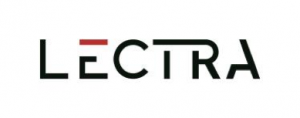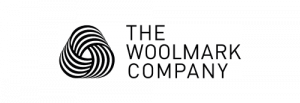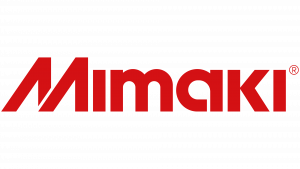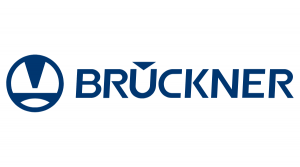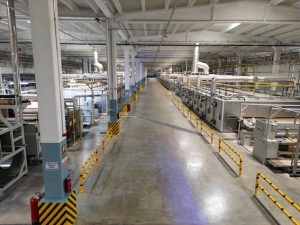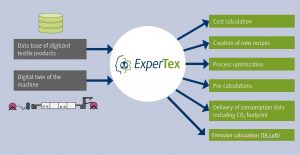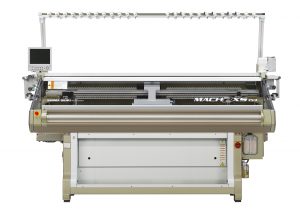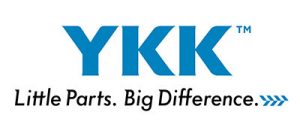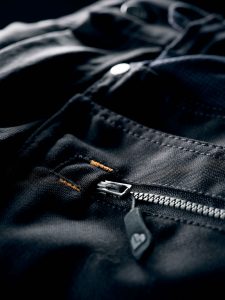WASHINGTON — APRIL 11, 2024 — Following is a transcript of Ambassador Katherine Tai’s remarks at the 2024 National Council of Textile Organization’s (NCTO’s) annual meeting:
“Good morning, everyone. Thank you, Kim and Norman, for the kind invitation and the warm introduction.
I am so glad to be with all of you in person this year. NCTO and our textile industry are very important to this Administration and to our economy, and it is my pleasure to be here to share that message with you directly.
Congratulations on NCTO’s 20-year anniversary. I am amazed by your dedicated staff, and I am grateful for Kim’s leadership. I also want to acknowledge past-President Auggie Tantillo who I know is here today.
Many of the companies represented in this room were here at the founding of the association 20 years ago. Through difficult times, you persisted and prevailed—your workers and your communities continue to be the foundation of our economy.
Many of you regularly meet with me or my staff. Thank you for taking the time to travel to Washington to share your views and concerns.
A priority of mine as the U.S. Trade Representative has been to put the “U.S.” back into USTR. This means that USTR will not sit around and wait for our workers and other underserved stakeholders to come find us—we are coming to you, meeting you where you are, where you work and raise your families.
Some of you know that I have been fortunate to visit several textile research and manufacturing facilities in the last few years.
I visited Aurora Specialty Textiles in Illinois, Milliken & Company in South Carolina, and American & Efird in North Carolina. I also went to North Carolina State University’s Wilson College of Textiles—maybe Wilson College’s excellence has something to do with NC State’s magical run in the March Madness tournament this year.
Just a few weeks ago, I returned to North Carolina, this time to Burlington, and toured Glen Raven’s facility.
These visits have been enormously meaningful for me for several reasons.
I get to see first-hand your cutting-edge technologies and how you are using green production processes to shrink the industry’s carbon footprint.
But perhaps more importantly, they are valuable because I get to witness your resilience and innovative spirit, and learn more about your businesses and the workers and communities they support.
One of the stories that came out of the pandemic was how our textile manufacturers were told your industry is not that strategic. In fact, you had been told this for a long time.
But we all know how false and shortsighted this narrative was.
During the height of the pandemic, it was your industry that was able to step up quickly, to repurpose your capabilities to produce essential equipment—like surgical masks and medical-grade gloves.
Companies that would normally be competing with each other worked together to deliver for the country.
This effort was heroic, and not only do I think we all owe you much gratitude, but I also think this is exactly the reason why our trade policy should be used to build resilience in sectors like yours, and not undermine you.
I know the challenges you all have faced in the last several decades and are continuing to face today. We saw so much production leave the United States, in part because of our trade policies.
Plants shuttered, and many of your companies and workers suffered. This also had devastating effects for your broader communities and many small businesses that are part of your communities. When people lose their jobs, or cannot earn a living wage, the effects ripple out far and wide.
I am here to tell you that I hear you, the President and the Vice President hear you, and we are on your side.
This is why we are taking a new approach to trade, one that puts working families first and strives for resilience and durable growth. One that addresses and advances the interests of all parts of our economy and does not pit Americans against Americans.
One that considers the impact of our policies on rural and disadvantaged communities, including those in which many of you operate.
Our approach is also based in fairness and fair competition, because we know how the People’s Republic of China’s unfair trade practices have wreaked havoc on your industry.
A lot of our work with our trading partners revolves around this issue, but we are also using our trade tools to defend your industry.
As many of you know, we are in the middle of the statutory four-year review of the PRC Section 301 tariffs, and I hope we can announce the outcome of that review soon.
I know that many of you submitted comments for the review, and I value your input.
One thing we learned from the pandemic is how vulnerable we are by over relying on products and inputs from distant shores, especially from economies that do not share our values. We are actively working to reduce this reliance, including by incentivizing U.S.- and regionally-based production.
This is why USTR recently published a public notice seeking broad input on supply chain resilience.
This is much more than just moving goods around.
It is about proactively strengthening domestic manufacturing. It is about creating strategic arrangements with trusted partners and with regional partners.
We want your input so that we can work together to develop innovative trade tools to advance supply chain resilience. Written comments are due by April 22, and requests to testify at our first public hearing are due tomorrow, April 12.
We are also holding field hearings in St. Paul, Minnesota, and in New York City, along with a fully virtual hearing, so I encourage all of you to participate.
An important aspect of our work on supply chains is to collaborate with trading partners to incentivize a race to the top through stronger coordination and alignment on labor and environmental protections. This is really important to design a system that can adapt and rebound with agility and to drive lasting, inclusive prosperity.
We are enforcing the labor rights provisions in our existing trade agreements to empower workers. We are also addressing unfair competition based on the exploitation of workers—using all of the tools of our trade policy to combat forced labor in global supply chains.
This looks like working with allies like Japan to set up a task force to address this issue. This also looks like fully enforcing the Section 307 forced labor import ban, and working with other federal government agencies to make sure that we are not importing goods made with forced labor from the PRC.
I want to emphasize that all of this requires close cooperation with all of you, and I truly appreciate NCTO’s support in these efforts.
This is how we can address today’s most pressing challenges and build durable growth by lifting up more diverse voices across our societies, especially those of underserved communities.
This is also how we can work with other countries to build our middle classes together, and not pit them against each other.
I know some NCTO members are participating in Vice President Harris’ Call-to-Action Initiative, and I want to thank you for that.
This is an important part of our Administration’s work to create meaningful economic opportunity in El Salvador, Guatemala, and Honduras. To date, this initiative has galvanized more than $5.2 billion in private sector commitments in northern Central America.
Let me tell you why this is important for Americans and working communities here—these investments and sourcing commitments will help increase economic opportunities in these countries, and promote greater near-shoring and support American jobs that provide the yarns and fabrics that go into Central American apparel production.
We want to work with all stakeholders to bring more production back to this hemisphere, while also strengthening regional supply chains and supporting good-paying jobs in the United States and Central America. This is how we grow together; this is how we incentivize a race to the top for our people.
We have several dedicated workstreams on this at USTR, including the CAFTA-DR Textiles and Apparel Supply Chain Directory and a joint project with Customs and Border Patrol, where we can continue to work together with all of you to promote regional manufacturing and sourcing, support supply chain resiliency, build capacity, and raise labor and environmental standards in our region.
I know enforcement against illicit trade is important to you, and USTR will continue to work with our CBP colleagues to address your concerns.
On yarn-forward rules of origin, I know how important those are to you and for the success of our trade partnership with the region. We understand that your investment and business decisions depend on the existing rules of origin remaining stable and secure.
I can assure you that this Administration remains committed to leveraging and safeguarding the strong yarn-forward rules of origin for apparel under the CAFTA-DR.
NCTO has been an important partner as we write the next chapter of U.S. trade policy. I know that we will continue our collaboration in the months ahead.
I understand your interest in renewing the Miscellaneous Tariff Bills program and the impact of de minimis on some manufacturers and retailers. We are closely following any Congressional action on this matter.
Thank you for the opportunity to share my thoughts with you, and congratulations again on your 20th anniversary. I look forward to the next 20 years and to continuing to work with you to craft a trade policy that works for all Americans.”
Posted: April 11, 2024
Source: U.S. Trade Representative Press Office (As Prepared for Delivery)
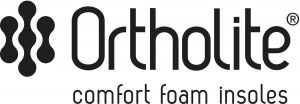 HO CHI MINH CITY, Vietnam — April 15, 2024 — OrthoLite® today unveiled a new midsole foam called Cirql rTPU30. This brand new patented innovation is made with 30-percent post-consumer recycled TPU material and manufactured through a chemical-free, supercritical foaming process. With 16 granted patents and additional patents pending worldwide for its 30-percent recycled injection foam, Cirql rTPU30 is a scalable and fully recyclable midsole solution that helps footwear brands to reach their climate and sustainability product goals.
HO CHI MINH CITY, Vietnam — April 15, 2024 — OrthoLite® today unveiled a new midsole foam called Cirql rTPU30. This brand new patented innovation is made with 30-percent post-consumer recycled TPU material and manufactured through a chemical-free, supercritical foaming process. With 16 granted patents and additional patents pending worldwide for its 30-percent recycled injection foam, Cirql rTPU30 is a scalable and fully recyclable midsole solution that helps footwear brands to reach their climate and sustainability product goals.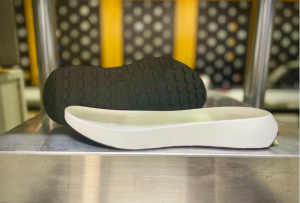 Cirql’s rTPU30 meets 2024 compliance standards by incorporating 30-percent GRS-certified, post-consumer recycled TPU materials directly into the foam using a patented technique exclusive to Cirql’s chemical-free supercritical injection foaming process.
Cirql’s rTPU30 meets 2024 compliance standards by incorporating 30-percent GRS-certified, post-consumer recycled TPU materials directly into the foam using a patented technique exclusive to Cirql’s chemical-free supercritical injection foaming process.
